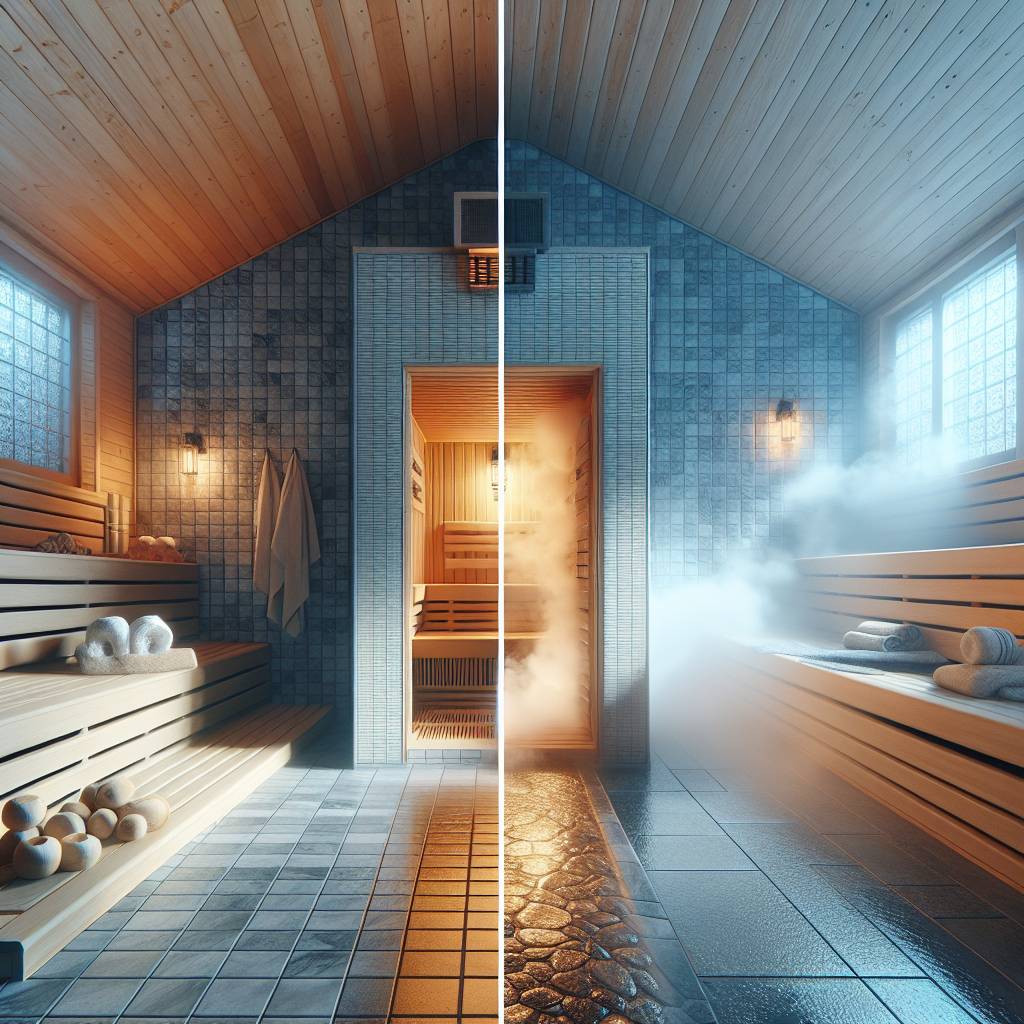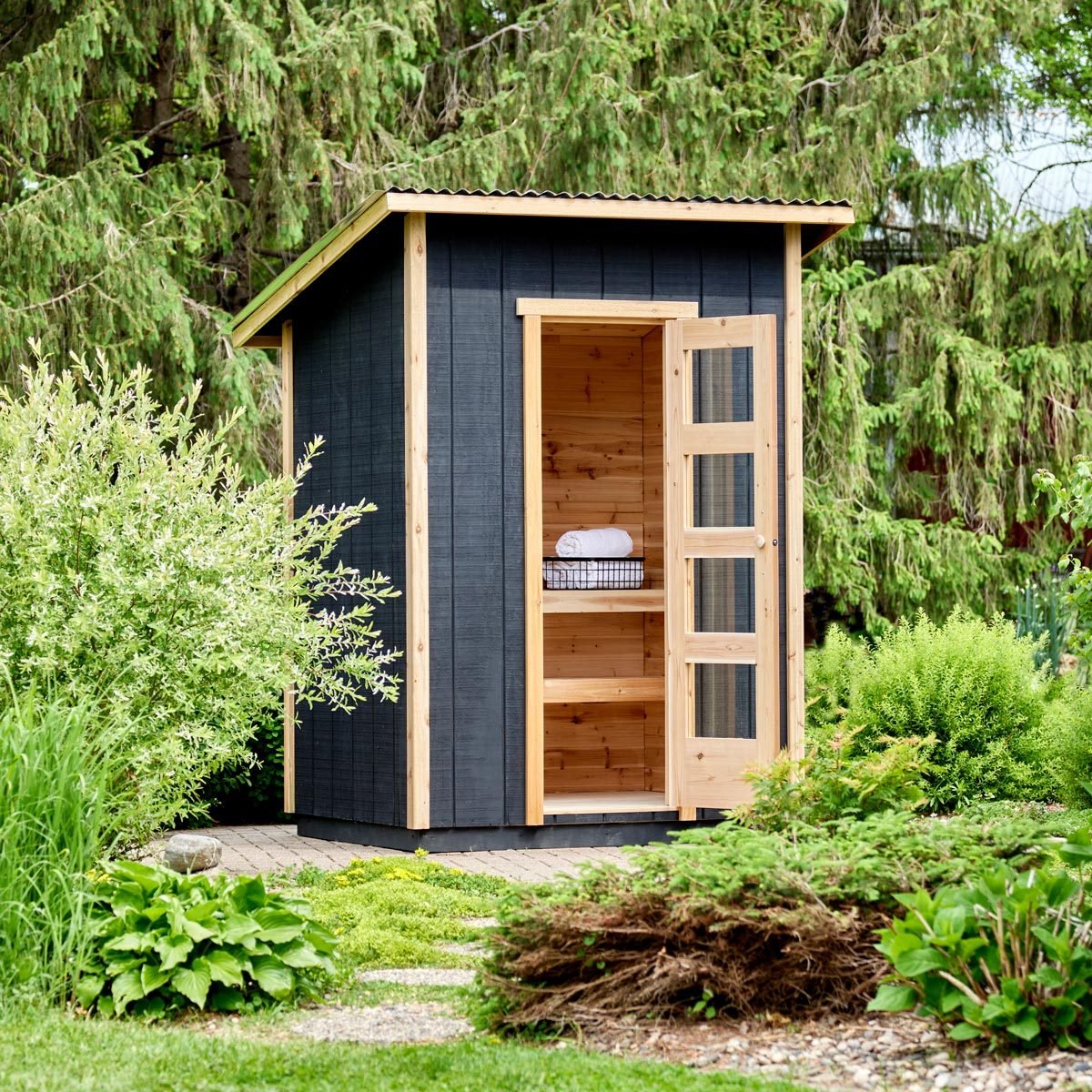Curious about the sauna vs. steam room debate? Saunas, originating from Finland centuries ago, offer dry heat therapy that may help with relaxation and detoxification. On the other hand, steam rooms, with roots tracing back to the Roman era, provide a humid environment believed to promote respiratory health and skin hydration. By exploring these contrasting environments, such as conventional saunas and indoor saunas with different heat sources, you can determine which experience aligns best with your wellness goals and preferences.
Key Takeaways
- Incorporate Both: Consider incorporating both sauna and steam room sessions into your wellness routine to maximize health benefits and enjoy a variety of experiences.
- Mindful Usage: Be mindful of individual health considerations and preferences when choosing between sauna and steam room to ensure a safe and enjoyable experience.
- Start Slow: When starting out with sauna or steam room sessions, begin with shorter durations and lower temperatures to allow your body to acclimate gradually.
- Hydration is Key: Stay hydrated before, during, and after sauna or steam room sessions to replenish fluids lost through sweating and prevent dehydration.
- Listen to Your Body: Pay attention to how your body responds to sauna and steam room experiences, adjusting frequency and duration based on comfort levels and overall well-being.
- Consult a Professional: If you have specific health concerns or medical conditions, consult a healthcare provider before incorporating sauna or steam room sessions into your wellness routine.
Understanding Sauna and Steam Room
Key Differences
Saunas use a traditional steam sauna while steam rooms rely on high humidity levels. The heat in saunas comes from rocks or stoves, whereas steam rooms generate heat by boiling water. Saunas have lower humidity levels compared to the intense humidity found in steam rooms.
The unique experience of saunas includes a dry heat that promotes sweating and relaxation. On the other hand, steam rooms offer a moist environment that can help open up pores and improve respiratory health. Saunas are known for their potential cardiovascular benefits, while steam rooms are praised for their skin hydration effects.
Personal preferences significantly impact the choice between a sauna and a steam room. Some individuals prefer the dry heat of saunas for detoxification purposes, while others enjoy the moist heat of steam rooms for skin benefits. Understanding these differences can help individuals select the option that aligns with their health goals and comfort levels.
Sweat Benefits
Sweating in a sauna aids in detoxification by flushing out toxins through the skin pores. The dry heat of saunas can also improve blood circulation, leading to potential cardiovascular benefits. Sauna sessions are often associated with relaxation and stress relief due to the heat’s calming effect.
In contrast, sweating in a steam room helps hydrate the skin by opening up pores and promoting perspiration. The high humidity levels in steam rooms can assist in clearing out impurities from the skin, resulting in a healthy glow. Steam room sessions are popular for their potential respiratory benefits and overall relaxation effects.
Comparing the sweat benefits of saunas and steam rooms reveals that both options offer unique advantages for overall health. While saunas focus on detoxification and improved circulation, steam rooms prioritize skin hydration and cleansing. Individuals can choose based on their specific health objectives and preferences.
Privacy Preferences
Privacy aspects differ between using a sauna and a steam room. Saunas typically involve dry heat chambers with wooden benches, offering a more exposed environment. In comparison, steam rooms have enclosed spaces filled with steam, providing a more secluded experience.
Individual privacy preferences play a crucial role in selecting between a sauna and a steam room. Some users may prefer the openness of saunas for socializing or relaxation, while others value the privacy of steam rooms for personal solitude. Understanding these distinctions can enhance the overall user experience in both settings.
Highlighting the differences in privacy experiences underscores how individual comfort levels impact sauna and steam room choices. Whether seeking social interactions in saunas or quiet moments in steam rooms, users can tailor their preferences based on their desired level of privacy.
Health Benefits Compared
Circulation Boost
Saunas improve circulation by exposing the body to heat, causing blood vessels to dilate and enhancing blood flow. Steam rooms also enhance blood flow and promote cardiovascular health through heat and humidity. Comparatively, saunas and steam rooms both have positive effects on boosting circulation.
Muscle Recovery
Saunas help in muscle recovery by aiding in muscle relaxation and relieving tension. On the other hand, steam rooms are beneficial for soothing sore muscles and joints. When it comes to muscle recovery, both saunas and steam rooms offer unique advantages.
Detoxification Process
Saunas promote detoxification by inducing sweat, which helps in eliminating toxins from the body. Steam rooms aid in detoxification by opening pores, promoting skin health, and assisting in toxin removal. The detoxification processes of saunas and steam rooms are effective in their unique ways.
Skin Health
Saunas benefit skin health by improving circulation, leading to better skin appearance and aiding in toxin removal. Steam rooms hydrate the skin, open pores, and promote overall skin health. In terms of skin health benefits, saunas and steam rooms offer distinct advantages.
Wellness Routine Inclusion
Post-Workout Recovery
Saunas and steam rooms are effective for post-workout muscle recovery due to increased blood circulation. The heat helps relax muscles, reducing soreness. Using saunas or steam rooms after exercise promotes relaxation, aiding in rejuvenation and stress relief.
Saunas excel in promoting muscle recovery by increasing blood flow to tired muscles. Steam rooms, on the other hand, provide a moist environment that can aid in post-workout relaxation. Saunas offer a dry heat experience, while steam rooms offer a humid heat environment.
Stress Reduction
Both saunas and steam rooms are known for their stress-reducing benefits through relaxation. Heat therapy in these facilities helps release endorphins, the body’s natural feel-good chemicals. Choosing between a sauna and a steam room depends on personal preference for heat type and humidity levels.
Heat therapy in saunas and steam rooms triggers the body’s relaxation response, reducing stress levels. The calming effects of the heat promote a sense of tranquility and well-being. When deciding between a sauna and a steam room for stress reduction, consider the intensity of heat and moisture that suits your preferences.
Enhanced Relaxation
Saunas and steam rooms offer relaxation benefits that contribute to mental well-being. The heat therapy induces a state of deep relaxation, helping to relieve tension and promote calmness. Saunas provide a dry heat environment, while steam rooms offer a moist heat experience for enhanced relaxation.
The calming effects of heat therapy in saunas and steam rooms help reduce anxiety and promote mental clarity. The warmth envelops the body, creating a soothing sensation that aids in relaxation. Consider your preference for dry or moist heat when choosing between saunas and steam rooms for enhanced relaxation.
Respiratory Support
Steam rooms are beneficial for respiratory conditions like asthma and sinus congestion due to the moist air that can help clear airways. Saunas can also assist in alleviating symptoms of respiratory issues by promoting easier breathing through improved circulation.
Saunas offer dry heat that can help open airways, making breathing easier for individuals with respiratory conditions. Steam rooms provide a humid environment that can soothe irritated airways and alleviate congestion. When considering respiratory support, choose between saunas and steam rooms based on your specific respiratory needs.
Unique Advantages
Sauna Highlights
Saunas offer a unique experience for detoxification and muscle relaxation. The dry heat in saunas helps in sweating out toxins from the body, promoting a deep cleanse. Saunas are known for their ability to improve blood circulation, leading to better oxygen flow throughout the body. This improved circulation can aid in muscle recovery and overall relaxation, making saunas a popular choice for individuals seeking relief from muscle soreness and tension.
- Saunas promote detoxification through sweating
- Improved blood circulation enhances muscle recovery
Steam Room Highlights
Steam rooms stand out for their skin hydration and respiratory support benefits. The moist heat in steam rooms helps to hydrate the skin deeply, leaving it soft and supple. Steam inhalation can provide relief for respiratory issues such as congestion and allergies. Steam rooms are favored by those looking to improve skin health and alleviate muscle pain through the soothing warmth they provide.
- Steam rooms offer deep skin hydration
- Inhalation of steam aids in respiratory relief
Potential Risks and Considerations
Hydration Needs
When using a steam room, individuals must pay attention to their hydration levels due to the high humidity. The steam room’s intense heat and steam can cause excessive sweating, leading to fluid loss. It is crucial to drink plenty of water before and after a steam room session to stay hydrated and maintain optimal bodily functions.
Staying hydrated is equally essential when using a sauna to prevent dehydration. Saunas also induce profuse sweating, resulting in fluid loss. Therefore, it is vital to consume an adequate amount of water before and after sauna sessions to replenish lost fluids and avoid dehydration. Comparatively, the hydration needs in steam rooms are higher than in saunas due to the increased humidity levels.
Health Precautions
Before using a sauna or steam room, individuals should consider various health precautions to ensure their safety. It is crucial to be aware of the potential risks associated with intense heat exposure in these facilities. Individuals with certain medical conditions such as heart problems, hypertension, or pregnancy should consult their healthcare provider before using saunas or steam rooms.
Saunas and steam rooms can pose risks for individuals with specific health issues, including low blood pressure or respiratory conditions. The high temperatures in these facilities can put added stress on the cardiovascular system, making it essential for individuals with underlying health concerns to seek medical advice before using them. Consulting a healthcare provider before sauna or steam room usage is paramount to ensure one’s well-being and safety.
User Experiences Shared
Relaxation Benefits
Saunas and steam rooms offer relaxation benefits, enhancing overall well-being. The heat therapy in these facilities induces relaxation by increasing blood circulation and reducing stress. Users often find a sense of calm and tranquility during sauna or steam room sessions.
- Saunas and steam rooms promote relaxation through heat therapy.
- Heat therapy aids in stress reduction and enhances personal wellness goals.
- The peaceful ambiance in saunas and steam rooms contributes to relaxation.
Muscle Pain Alleviation
Saunas help alleviate muscle tension and promote pain relief by increasing blood flow to muscles. Steam rooms are beneficial for soothing sore muscles and joints, providing relief after intense physical activity. Comparatively, saunas are effective in reducing muscle pain, while steam rooms offer soothing effects on the body.
- Saunas alleviate muscle tension by increasing blood flow.
- Steam rooms soothe sore muscles and joints, aiding in pain relief.
- Saunas excel in alleviating muscle pain, while steam rooms provide soothing effects.
Opening Airways
Steam rooms aid in opening up airways and relieving respiratory congestion by creating moist heat. Saunas improve breathing and respiratory conditions through dry heat therapy, benefiting individuals with respiratory issues. Both saunas and steam rooms play a crucial role in promoting better respiratory health by opening airways for improved breathing.
- Steam rooms help open airways by creating moist heat.
- Saunas enhance breathing and respiratory conditions with dry heat therapy.
- Saunas and steam rooms contribute to better respiratory health by opening airways.
Why Choose One Over the Other
Personal Wellness Goals
Saunas and steam rooms offer unique benefits that cater to individual wellness goals. Saunas, with their dry heat, are ideal for promoting relaxation, improving circulation, and relieving muscle tension. On the other hand, steam rooms, with their moist heat, are great for hydrating the skin, clearing sinuses, and detoxifying the body. Choosing between a sauna and a steam room depends on whether one seeks muscle relaxation or skin hydration.
When deciding between a sauna and a steam room, it is crucial to align their usage with personal health objectives. Saunas help in flushing out toxins through sweat, which is beneficial for overall health. In contrast, steam rooms can aid in respiratory health by opening up the airways and easing breathing. Aligning sauna or steam room usage with specific wellness goals ensures maximum benefits.
The choice between a sauna and a steam room varies based on individual wellness aspirations and needs. For those seeking a more intense heat experience to relax muscles deeply, saunas are preferred. Conversely, individuals looking for a gentler heat environment that promotes skin hydration might opt for steam rooms. Consideration of personal preferences is key in deciding between these two wellness options.
Availability and Access
Saunas and steam rooms are commonly found in various settings such as gyms, spas, or wellness centers. The availability of these facilities allows individuals to incorporate heat therapy into their wellness routines easily. Whether at a fitness facility or a spa retreat, saunas and steam rooms provide accessible options for relaxation and rejuvenation.
Access to saunas and steam rooms is influenced by factors like membership status at a gym or spa, location proximity, and cost considerations. While some may have unlimited access to these facilities through gym memberships, others may choose to visit spas for occasional use. The convenience of accessing saunas and steam rooms plays a significant role in determining which option suits individual lifestyles best.
How to Get Started
Tips for First-Timers
For first-time users, it’s essential to start slow when using a sauna or steam room. Begin with short sessions to allow your body to acclimate to the heat gradually. Remember to stay hydrated before and after your session to prevent dehydration.
When entering a sauna or steam room, respect others’ space by keeping conversations quiet or maintaining silence. It’s crucial to shower before entering to maintain hygiene and prevent sweat from carrying impurities into the sauna or steam room.
To enhance your experience, consider bringing a towel to sit on and another to wipe off sweat. Listen to your body and leave if you start feeling dizzy or uncomfortable. After your session, take a cool shower to regulate your body temperature and aid in the cooling-down process.
Maximizing the Experience
To maximize the benefits of sauna and steam room sessions, alternate between heat and cool-down periods. This practice can help improve circulation, promote relaxation, and enhance detoxification.
To further enhance your experience, consider incorporating aromatherapy oils in the sauna or steam room. Certain scents like eucalyptus or lavender can help promote relaxation and clear breathing.
For optimal results, engage in deep breathing exercises during your session to promote relaxation and reduce stress levels. This can complement the detoxification process and contribute to an overall sense of well-being.
Final Remarks
In your quest for the ultimate relaxation and wellness boost, you’ve delved into the realms of saunas and steam rooms, uncovering their unique benefits and considerations. As you navigate the choice between these heat therapies, remember to prioritize your preferences and health goals. Whether you opt for the dry heat of a sauna to unwind or the humid warmth of a steam room to rejuvenate your skin, both offer avenues to destress and revitalize your body.
Now armed with insights into user experiences, health perks, and potential risks, it’s time to take the plunge into incorporating sauna sessions or steam room visits into your wellness routine. Experiment with both, listen to your body, and savor the myriad benefits each has to offer. Your journey to enhanced well-being starts now!
Frequently Asked Questions
What are the main differences between using a sauna and a steam room?
Saunas use dry heat at high temperatures, while steam rooms provide moist heat at lower temperatures. Saunas have lower humidity levels than steam rooms, which can impact how your body responds to the heat.
Which one is better for detoxification – a sauna or a steam room?
Both saunas and steam rooms can help with detoxification by promoting sweating, but saunas may be more effective due to the higher temperatures. Sweating in a sauna helps eliminate toxins through the skin.
Can using a sauna or steam room help with muscle relaxation?
Yes, both saunas and steam rooms can aid in muscle relaxation. The heat in these environments helps increase blood flow to muscles, reducing tension and promoting relaxation.
Are there any specific health conditions that would make it unsafe to use a sauna or steam room?
Individuals with certain health conditions such as heart problems, low blood pressure, or respiratory issues should consult their healthcare provider before using saunas or steam rooms. Pregnant women should also seek medical advice before use.
How often should one use a sauna or steam room for optimal benefits?
The frequency of sauna or steam room use depends on individual preferences and health conditions. It’s generally recommended to start with shorter sessions and gradually increase duration based on how your body responds. Listen to your body’s signals.






